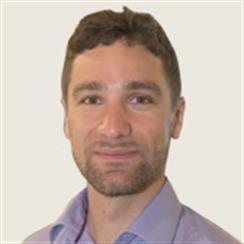Statistics
Challenging statistics of weather extremes
More accurate statistical modeling of extreme weather will improve forecasting and disaster mitigation.
By integrating previously distinct statistical paradigms into a single modeling scheme, Raphaël Huser from KAUST and Jennifer Wadsworth from Lancaster University in the UK have taken some of the guesswork out of modelling of weather extremes. This could greatly improve predictions of future extreme events.
Modeling the frequency and severity of possible weather extremes, such as intense rainfall, strong winds and heat waves, must account for nearby monitoring stations being spatially correlated. That is, heavy rain at one station often implies that there will be similarly heavy rain nearby.
However, as the severity of the event increases, this spatial dependence can weaken—the higher the rainfall intensity, for example, the less likely it is to occur across a wide region. Some extreme events may even be entirely localized around one station, with no correlation at all with those nearby.
Deciding whether the dependence changes with intensity, and to what extent, is a crucial step in the model selection process, but is often difficult to determine. For those involved in predicting weather disasters, a mismatch between model selection and the hidden character of the data can critically undermine the accuracy of predictions.
“It is very common with wind speeds or rainfall that spatial dependence weakens as events become more extreme, and eventually vanishes,” explains Huser. “If we restrict ourselves to ‘asymptotically’ dependent models, we might overestimate the spatial dependence strength of the largest extreme events; meanwhile, if we restrict ourselves to ‘asymptotically’ independent models, we might underestimate their dependence strength.”
Building on their recent work, Huser and Wadsworth have developed an integrated statistical approach that eliminates this guesswork by combining these disparate spatial dependence models on a smooth continuum.
“Our statistical model smoothly transitions between asymptotic dependence and independence in the interior of the parameter space,” explains Huser, “which greatly facilitates statistical inference and is more general than other models, covering a different class of statistical models with application to a broader range of scenarios.”
The researchers applied the modeling scheme to winter observations of extreme wave height in the North Sea, which was found in a previous study to have a high degree of ambiguity in its dependence class. The model proved to be very effective in dealing with the data, accounting for the case where there is strong spatial dependence but also strong evidence of asymptotic independence.
“Our new statistical model bridges these two usually distinct possibilities, and crucially, learning about the dependence type becomes part of the inference process,” says Wadsworth. “This means the model can be fitted without having to select the appropriate dependence class in advance, while being flexible and easy to use.”
References
-
Huser, R. & Wadsworth, J.L. Modeling spatial processes with unknown extremal dependence class. Journal of the American Statistical Association 114, 434-444 (2018).| article
You might also like

Statistics
Joining the dots for better health surveillance

Statistics
Easing the generation and storage of climate data

Statistics
A high-resolution boost for global climate modeling

Applied Mathematics and Computational Sciences
Finer forecasting to improve public health planning

Bioengineering
Shuffling the deck for privacy

Bioengineering
AI for cells helps illuminate their identity

Applied Mathematics and Computational Sciences
Global look at sex differences in young people's mortality

Applied Mathematics and Computational Sciences




